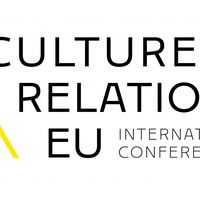The EU’s Cultural Diplomacy: What Role for Cities?

CIDOB - the Barcelona Centre for International Affairs - publishes an article on the role cities in Europe might take in the EU's cultural diplomacy agenda.
Cities are one of the “under-explored potentials” of EU external cultural relations. With the EU’s new chief diplomat, Josep Borrell, taking office on 1 November there is an opportunity to review the EU’s cultural diplomacy and give cities and their local governments real consideration as partners that could help implement the new spirit of intercultural dialogue on the ground and inform future EU policies and actions.
Cultural diplomacy is an emerging field of the European Union’s foreign policy alongside the established instruments of security and defence. With the EU only having supporting competence in culture, the definition of the new policy area has been slow and cautious to ensure complementarity with Member States. However, a significant step was taken in June 2016, when three weeks prior to the launch of the EU Global Strategy, the Commission and External Action Service presented the Joint Communication Towards an EU strategy for international cultural relations, which was approved by the Council in May 2017. The most innovative aspect of this strategy is the move from a conception of cultural diplomacy as a soft power tool towards a more inclusive and reciprocal agenda built around “a new spirit ofdialogue, mutual listening and learning, joint capacity-building and global solidarity”.
In concrete terms, these ideals should have translated into a bottom-up approach that stresses people-to-people cooperation with limited involvement of governments and stronger co-ownership with local stakeholders in third countries. However, regrettably this was not recognized in the EU’s implementation plan outlined in a framework for action adopted by the Council in April 2019. The plan relies almost entirely on partnerships with the cultural institutes of Member States (e.g. British Council, Goethe-Institut and Institut Français) and their umbrella organization, the EU National Institutes for Culture (EUNIC) network, created in 2006 to promote collaboration between European cultural institutes in an outside the EU and to have a joint platform for cooperation with the EU. Other non-state actors, including local governments, independent cultural organizations and civil society that the Joint Communication listed as vital to the implementation of the strategy are barely mentioned. This failure to involve non-state actors risks diluting the innovative essence of the EU’s cultural diplomacy in the long-term.
Read full article on CIDOB (CIDOB Opinion 589)
This article complements other Global Cities Programme research by CIDOB - for example:
Rethinking the ecosystem of international city networks.Challenges and opportunities
Cities have emerged as major players on the international scene in recent years. Yet, their ambition to project themselves internationally and to influence global agendas is not a new phenomenon. Cities have operated through organised networks for decades. The first international organisation of cities was the International Union of Local Authorities, created in 1913. Towards the end of the past century, the regional integration processes of the 1990s engendered a proliferation of city networks, especially in Europe but also in Latin America, Africa and Asia. In 2004, the founding of United Cities and Local Governments as a platform for international municipalism marked a turning point.
Similar content
posted on
17 Feb 2020
posted on
10 Apr 2019
from - to
30 May 2019 - 31 May 2019
posted on
07 Feb 2017
posted on
25 Apr 2016






